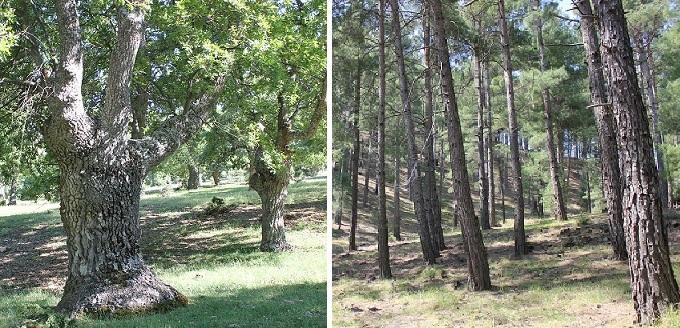Introduction
Oak forest stands in the Mediterranean basin have a long history of man-induced disturbance. For thousands of years, large forested areas were deforested and fragmented due to clear-cutting, agricultural expansion and wildfires. Oak stands also have a long history of management. The trees have been used for pollarding, coppicing and as wood pastures for grazing livestock. These types of small-scale management have allowed many oak forest stands to become very old, and a threatened and rare diversity of organisms are associated with these habitats. Where large areas in the Mediterranean basin have been recently afforested with pines, oak stands are often transformed to pine plantations. These practices are likely to have negative influences on the biodiversity of Mediterranean oak forests, but few studies have analyzed the differences in species composition between the two habitats. In order to identify crucial attributes in the habitats, associations between vegetation structure and biodiversity also need to be assessed. In this study, forest birds were used as biological indicators to assess how pine and oak stands differ in their capacities to support forest bird assemblages. Birds have been found to be suitable biodiversity indicators, especially when using data on all species included in the assembly. Birds are also quite easy and cost-effective to monitor in the field, and are popular amongst the public. Information on how biodiversity differ between habitats of different attributes, history and management is important to develop more sustainable forestry practices and guide conservation priorities.

Aims
• Compare bird assemblages of oak and pine stands
• Analyze relationships between birds and environmental variables
• Identify habitat structures important to retain in managed forest stands to benefit breeding birds
Responsible for this page:
Director of undergraduate studies Biology
Last updated:
05/27/14
